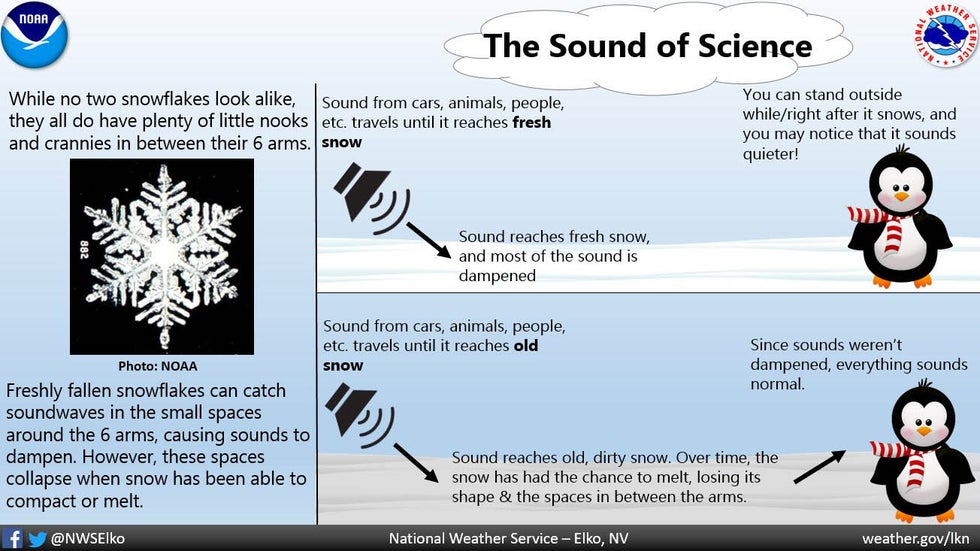
Have you ever stepped outside while a peaceful light snow was falling, or went outside to shovel your driveway shortly after snow had fallen? Did it seem quieter than usual? There's a scientific reason for that, explains the National Weather Service.
Daniela Pirraglia, a meteorologist at the weather service's Elko, Nevada, office, created the infographic above which provides a sound explanation of this phenomenon.
The most common type of snowflake, called a dendrite, has six "arms" and is shown at the left side of the infographic. While falling toward the ground, these dendrites catch soundwaves in the small gaps between their arms, dampening the sounds before they reach your ears.
The same quieting effect occurs even after the snow ends due to the fresh snowpack. Those piled-up dendrites catch the soundwaves produced by cars, snowblowers, people or animals, making it sound quieter than it otherwise would without any snow on the ground.
However, the same is not true for an old, dirty snowpack. Once snow begins to melt, the snowflakes lose their dendritic shape, closing up the spaces between the arms. The flakes are then no longer able to catch any nearby soundwaves, so sounds aren't dampened and you hear everything at normal levels again.
So if you're looking for peace and quiet, and you don't mind the cold, try spending some time outdoors the next time it snows and witness this scientific phenomenon in action.
The Weather Company’s primary journalistic mission is to report on breaking weather news, the environment and the importance of science to our lives. This story does not necessarily represent the position of our parent company, IBM.
The Weather Company’s primary journalistic mission is to report on breaking weather news, the environment and the importance of science to our lives. This story does not necessarily represent the position of our parent company, IBM.

No comments:
Post a Comment